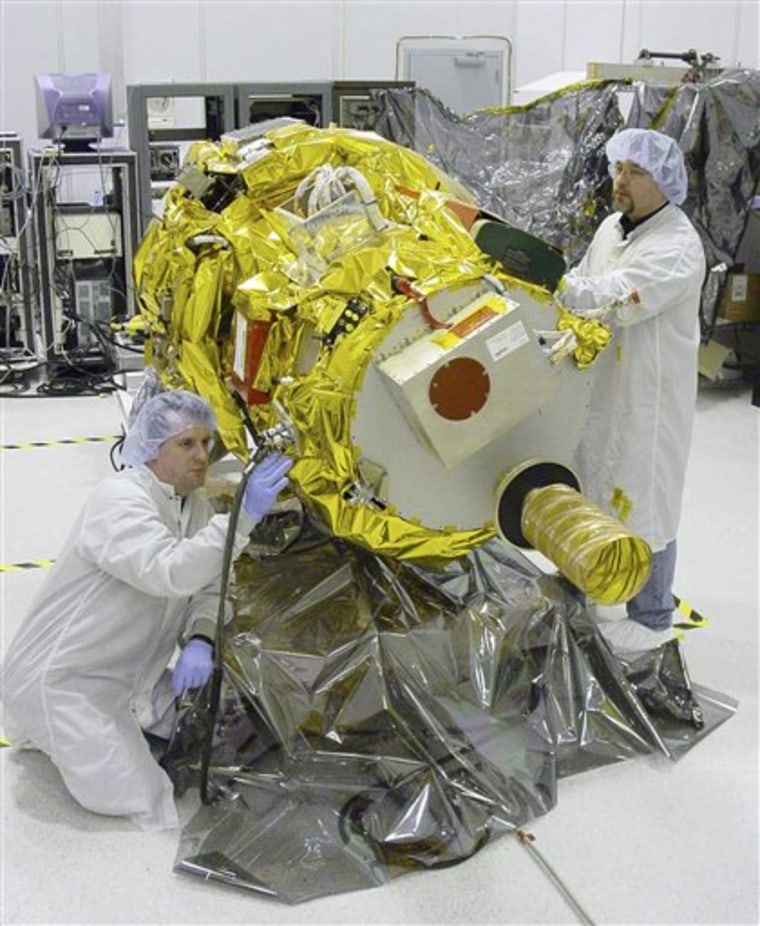After a series of delays, NASA has scheduled April 15 as the launch date for the first robotic spacecraft designed to rendezvous in orbit with other satellites without any human intervention, officials said Friday.
If all goes as planned, the DART spacecraft — short for Demonstration of Autonomous Rendezvous Technology — will soar into space off the California coast, catch up with an orbiting Pentagon satellite and maneuver around it, making close approaches and moving away.
"We're prepared for launch," launch director Omar Baez said Friday during a televised news conference from NASA's Marshall Space Flight Center in Huntsville, Ala. "The next two weeks are crucial. There's a lot of work that's got to be done, but we're getting there."
The U.S. space program has so far relied on astronauts to maneuver around spacecraft in orbit and repair them. If the 24-hour DART mission is successful, it will lay the foundation for future manned and unmanned projects using similar technology.
Future applications could include robotic delivery of cargo to the international space station and automated docking and repair between spacecraft in orbit.
The $110 million DART is equipped with onboard computers and sensors to perform tasks without human guidance.
"The goal of DART is to basically have an autopilot," said Jim Snoddy, DART project manager at Marshall. "If you don't have astronauts, you have a way to totally turn it over to an autonomous system."
The 800-pound (365-kilogram) spacecraft will be attached to a Pegasus winged rocket and mounted on Orbital Sciences Corp.'s Stargazer L-1011 aircraft at Vandenberg Air Force Base on the coast northwest of Los Angeles.
The aircraft will carry the rocket over the Pacific and launch it at an altitude of about 40,000 feet (12.2 kilometers).
After entering a polar orbit more than 400 miles (640 kilometers) high, DART will travel around the Earth and join up with three satellites. It will then begin interacting with one of them, an experimental communications satellite that was launched in 1999 and carries special reflectors for use in guidance systems like the one aboard DART.
The spacecraft will maneuver around the satellite, using its own software to navigate.
Previously scheduled DART launches last fall were canceled because of technical snags and poor weather.
